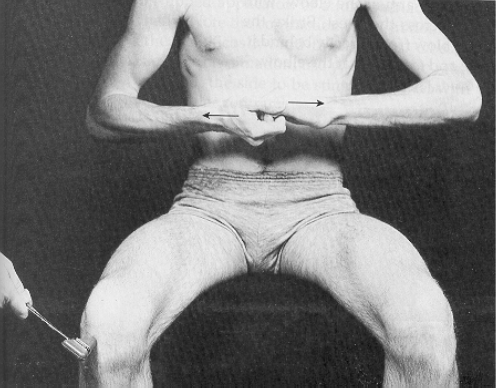- Corneal
- Pharyngeal
- Biceps Reflex
- Triceps Reflex
- Brachioradialis Reflex - Supinator Reflexes
- Abdominal reflexes
- Patellar (knee jerk)
- Achilles (ankle jerk)
- Anal Reflex
Deep Tendon Reflexes
Hyperactive reflexes
- suggest CNS disease
- sustained clonus (confirms)
Diminished or absent reflexes
- loss of sensation
- damage to spinal segments
- damage to peripheral nerves
- diseases of muscles
- diseases of the neuromuscular junctions
Spinal Reflexes: DTRsZ
| Reflex | Segmental Level |
|---|---|
| Supinator Reflexes | C5, 6 |
| Biceps Reflex | C5, 6 |
| Triceps Reflex | C6, 7 |
| Abdominal reflexes - upper | T8, 9, 10 |
| Abdominal reflexes - lower | T10, 11, 12 |
| Knee (Patellar Reflex) | L2, 3, 4 |
| Plantar Reflex - Babinski | L5, S1 |
| Achilles Reflex | S1 primarily |
| Anal Reflex | S2 - S4 |
Deep Tendon Reflexes: Grading
| Grade | Response |
|---|---|
| 4+ | Very brisk, hyperactive, with clonus |
| 3 | Brisker than average, slightly hyperreflexic |
| 2 | Average, expected response; normal |
| 1 | Somewhat diminished, low normal |
| 0 | No response, absent |
Jendrassik’s Maneuver
Reinforcement technique Upper extremities
- clench teeth
- squeeze thigh
Lower extremities
- lock fingers and pull one against the other
